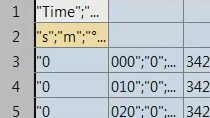Determining Chassis Stiffness with MATLAB
From the series: Improving Your Racecar Development
Christoph Hahn, technical education specialist at MathWorks, introduces you to an efficient approach to determine structural properties of a steel tube frame using the direct stiffness method.
Determining the structural properties of a truss or beam framework is part of many introductory mechanics courses for civil mechanical engineers. Apart from analytical schemes or graphical methods such as the Cremona plan, displacements and member forces can be calculated using the direct stiffness method. This technique, which is the basis for all considerations within that episode, is a classic first step to explore the Finite Element Method (FEM).
Starting from an analogy between a truss framework and a FSAE steel tube frame, Christoph explains the basics of the direct stiffness method using an introductory example of a 3-truss framework. He also introduces you to the MATLAB File Exchange where users have contributed various implementations of the direct stiffness method. Below is a list of additional resources:
- Larry‘s Toolbox
- Space Truss Systems as Linear Static Analysis
- Beam and Truss Analysis Utilities
- Matrix Structural Analysis
- Truss Solver and Genetic Algorithm Optimizer
In a software demonstration, Christoph shows how the direct stiffness method can be coded and he applies a bending, as well as a torsional, load to a 34-truss framework. The CPU time for that solution is below 0.2 seconds, this illustrates the suitability of this approach to optimize truss frameworks.
Send your feedback to formulastudent@mathworks.com.
Published: 5 Dec 2014






